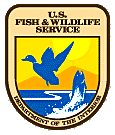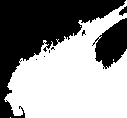

ResourcesIdentification of Important Habitats in Coastal New Hampshire
Arnold Banner and Gerald Hayes, U. S. Fish and Wildlife Service Gulf of Maine Project, November, 1996 AbstractThe Gulf of Maine Council on the Marine Environment, U.S. Fish and Wildlife Service Gulf of Maine Project, and the Huntsman Marine Center cooperatively supported 2 pilot projects to map important habitats in U.S. and Canadian coastal areas. The pilot projects in Great Bay, New Hampshire and in Passamaquoddy Bay, New Brunswick were intended to develop methods for selection of evaluation species, for identifying and rating those species' habitats, for determining regionally important habitats based on that information, and for use of the maps and associated information in resource conservation. The analysis for Great Bay is described in detail, and maps of important habitats are displayed on this and linked webpages. These maps are being distributed to government agencies and to local conservation interests for their use in habitat conservation. The digital data described in this report are available as geo-referenced compressed binary raster files. Digital data may be downloaded for use in a number of GIS programs and viewers <to download area> Once downloaded, the files should be expanded using PKUNZIP; they may then be used directly as images in viewers such as ARCVIEW. Figures in this report depict these same data themes. Table of Contents
List of Tables
List of Figures
Appendix A: Identification of Species for Priority Habitats (Gulf of Maine Council Ranked List of Evaluation Species) Appendix B: Federal Grant Opportunities for Habitat Protection IntroductionThe Action Plan of the Gulf of Maine Council (GOM) called for identification of "regionally significant habitats" for management, protection and restoration. The designation of regionally significant habitats was to be based on their utility to regionally important species. During 1993/1994 the Habitat Panel of the GOMC selected and ranked a list of such "priority species" according to social, commercial, ecological, and institutional criteria (Appendix A). While there was broad agreement on the species list, questions remained about its application in identifying habitats. The designation of regionally significant habitats would require comparison of all potentially significant habitats in the watershed, a major undertaking. Instead, it was decided to conduct a Canadian and a U.S. pilot study to explore the methods and implications of the approach. The project areas, Great Bay and Passamaquoddy Bay, were selected on the basis of resource values and local interest in conservation via voluntary, management, and regulatory mechanisms. The pilot projects were to use the listed "priority species" but assess habitats within two embayments of the Gulf of Maine, rather than Gulf- wide. Following the development of standard analytical methods, additional areas of the Gulf can be examined in a comparable manner in later studies. Thus, while the potentially highest ranked habitats in the region may only be identified in future analysis, appropriately ranked regionally important habitats can be identified (and protected) via these pilot projects. Tasks for the pilot projects included: 1) developing methods for mapping habitats which may be generally applicable throughout the Gulf of Maine, and which reflect the best use of available information; 2) mapping habitats specifically for "priority species" identified by the Council's Habitat Panel; 3) developing methods for combining habitat maps in order to highlight habitats which may be of greatest importance to the largest number of listed species; 4) producing maps and assembling other information with which local conservation interests may initiate protection/restoration projects. This analysis parallels another recent GIS analysis by the Great Bay Resource Protection Partnership (Sprankle 1996); the GOMC study complements the latter's terrestrial and fresh water emphasis. Conservation efforts are expected to be based on partnership techniques proven successful for the applicants in other Gulf localities. AcknowledgmentsWe were aided by many persons in this investigation, and are especially indebted to the following: Seth Barker (Maine Department of Marine Resources), Steve Brown, Steve Jury, and Ken Buja (National Oceanic and Atmospheric Administration), Ann Reid (Damon Burt Great Bay Watch), Chris Nash (New Hampshire State Planning Office), Fred Short, Richard Langan, Larry Ward, Arthur Mathiesen (Jackson Estuarine Laboratory), Douglas Grout, John Nelson, John Kanter, Bruce Smith, Edward Robinson (New Hampshire Fish & Game Department), Kimber Sprankle, Joe McKeon (U. S. Fish and Wildlife Service), Chris Martin (New Hampshire Audubon Society), and Dea Brickner-Wood (Society for New Hampshire Forests). Many of the data themes were provided by New Hampshire GRANIT. |

